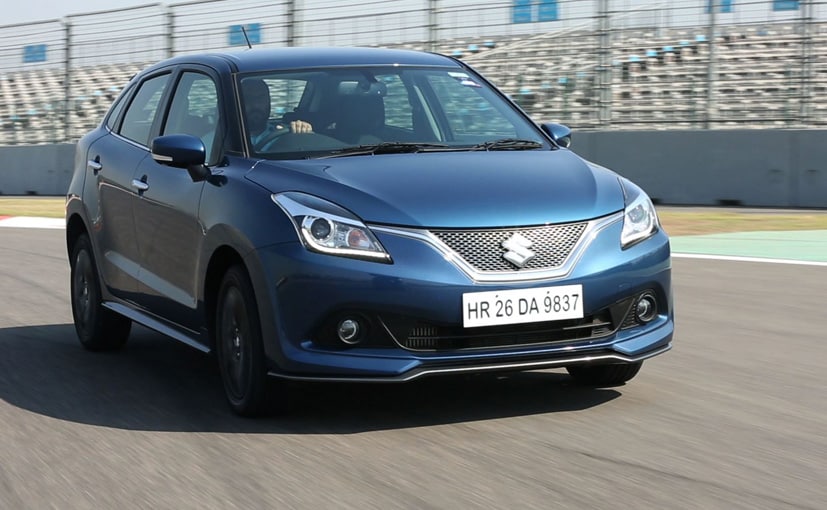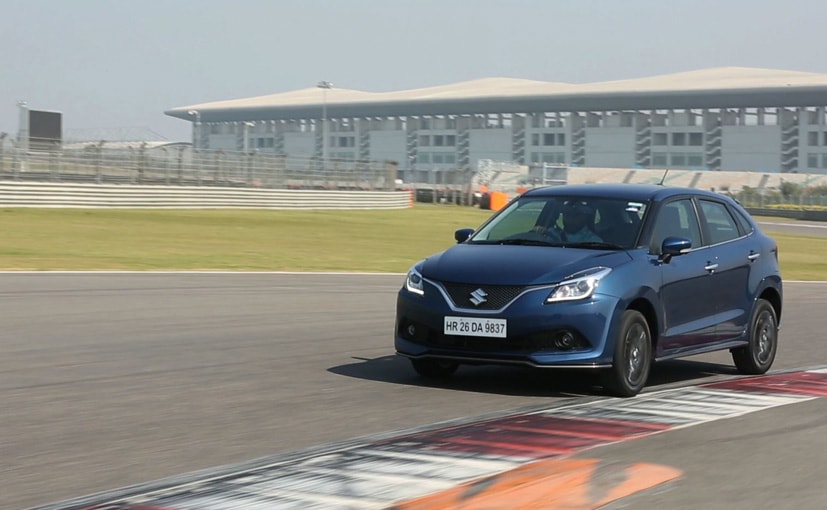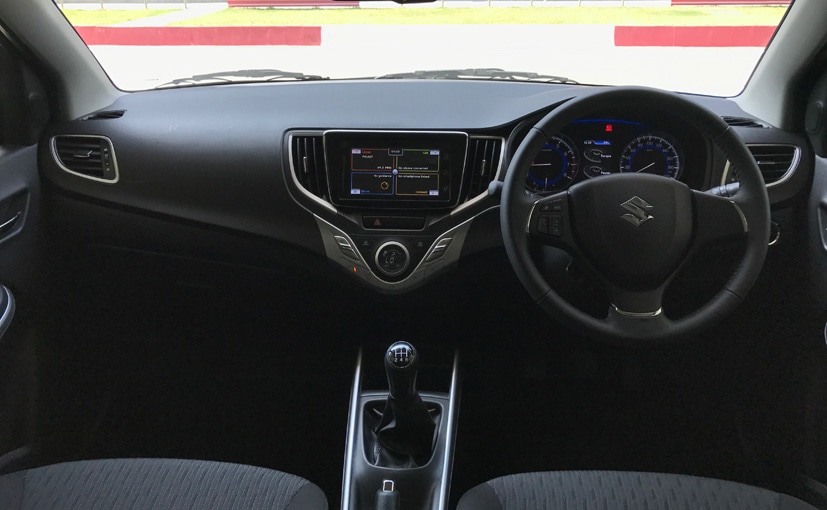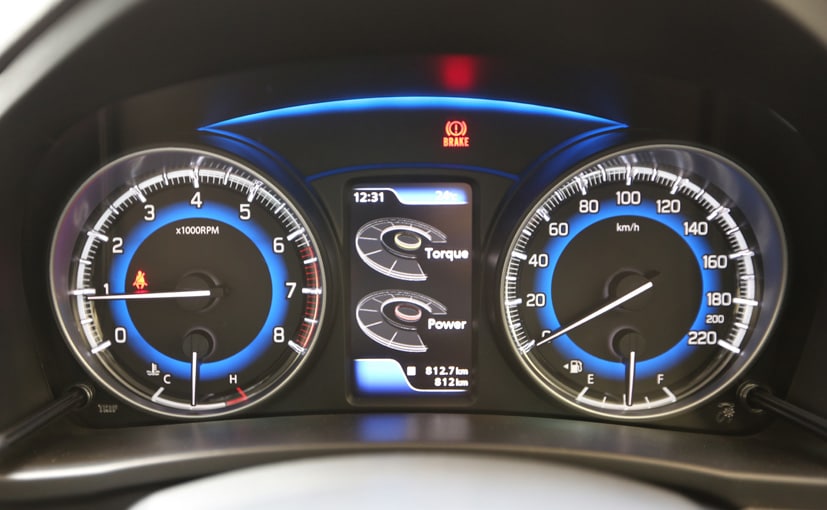
Originally launched in October 2015, the Maruti Suzuki Baleno came at a time when Indian car buyers were finally buying premium, larger hatchbacks that essentially cost as much as subcompact sedans. The Baleno has sold almost 140,000 units since then and is one of Maruti Suzuki’s mainstays, bringing in more profits and a larger market share. And now that the Baleno has driven a lot of money in to Maruti’s coffers, it has spent some of that to bring us a new variant. It is a long ignored segment of the Indian car market – one that addresses the enthusiast motorist! The result is the Maruti Suzuki Baleno RS and we are the Buddh International Circuit to drive it.
Maruti Suzuki Baleno RS Front
Under the hood, the Baleno RS gets a 1 litre, 3-cylinder, turbocharged petrol engine. Now since Maruti Suzuki has never done forced induction petrol engines in the past, the Baleno Boosterjet engine is completely new technology for it. The engine makes a substantial 101 bhp and 150 Nm. Despite being turbocharged, the max power and peak torque output is well spread out across the rev range and the engine almost feels like it is naturally aspirated, with very little turbo lag. Of course what everyone really wants to know is how the car’s outright performance is! And on that front too, the Baleno RS does not disappoint.

Maruti Suzuki Baleno RS on BIC
Power delivery is very linear and the RS accelerates well on its way to three digit speeds. On the back straight at the BIC, we hit speeds of just over 160 kmph in fourth gear with the car still eager to accelerate more. Another point to note is that Maruti has not gone for an automatic gearbox like some of its competition and stuck to a 5-speed manual gearbox only. The gearbox isn’t as short and slick as that on the Swift but still feels very rewarding when shifting extremely quickly. Now if you are wondering why the Indian spec Baleno RS is almost 10 bhp down on power as compared to its global counterpart – blame it on the quality of fuel that our country has to offer. When BS VI fuel comes in, the Baleno RS will have the potential to match its international counterpart’s output at 110 bhp.
Maruti Suzuki Baleno RS Rear
The Baleno RS does get a slightly retuned suspension as compared to the standard car as it is slightly heavier. But a lower ride height and stiffer suspension setup should have been standard given the car’s sporty claim. That would have definitely differentiated the RS from its competition – and also more substantially from the regular Baleno too. So unfortunately the RS has a lot of body roll, especially when we took it to its limit on the track. The RS does get disc brakes all around – which is a good thing – 14 inch up front and 13 inch at the rear. As a result, the braking on the car has improved by leaps and bounds. On the safety side, ABS and two airbags come as standard – in keeping with Nexa portfolio products.
Maruti Suzuki Baleno RS Side
What else makes the RS stand apart from the Baleno you might ask? The easiest (and frankly only) way to differentiate the RS vs. the normal car is to take all the additional exterior bits and changes. The Baleno RS gets a new front bumper with a much larger intake and lip spoiler. The grille and the lip spoiler are both painted in a shade of grey and the new subtle side skirts and the rear bumper also get the ‘lipped’ treatment. The rear bumper is also much larger and again, more aggressive. It kind of reminds us of the factory tuned hot hatchbacks from the late 90s and 2000s (think Europe). The Baleno RS also gets a slightly larger spoiler as compared to the standard car’s. The spoiler is body coloured but a black or grey contrast finish would have looked very nice too. And now to the one part of the exterior design that we think Maruti Suzuki has dropped the ball on. The wheels on the RS are the same ones that you get on the standard car but in a shade of black. Maruti Suzuki could have easily offered a sportier set of alloys that would have made the Baleno RS look much sharper.

Maruti Suzuki Baleno RS Interior
Maruti hasn’t changed anything on the interior of the Baleno RS as compared to thestandard car. You still get the all-black dashboard with silver accents on the centre console and a large touchscreen that gets Apple CarPlay and Navigation as standard. The Baleno RS also comes with a torque/power output readout in the instrument cluster that is always a cool thing to look at (and try to max out) while driving.

Maruti Suzuki Baleno RS instrument cluster
A sportier seat package or even leather interiors would have been welcomed by buyers – even if it meant spending a bit extra. And if not that, maybe a RS logo, or contrast stitching on the seats, or even red accents would have helped create a signature.
Maruti Suzuki Baleno RS badge
Priced at Rs 8.69 lakh (ex-showroom, Delhi), the Baleno RS is about Rs 1.4 lakh more expensive than the top of the line 1.2 litre K12 petrol (manual) Baleno and about Rs 25,000 more expensive than the fully loaded diesel variant. There are definitely a few things like a set of nicer wheels and a better interior package that Maruti Suzuki could have added to make it stand apart more. But with more power than both current engine options (but less torque than the diesel), the Baleno RS still makes a lot of sense for the enthusiast motorist. That said, driving it on the Buddh International Circuit is one thing and on the road is a whole other ball game. So stay tuned for a more detailed look at how it performs under real life conditions very soon.
[“source-ndtv”]